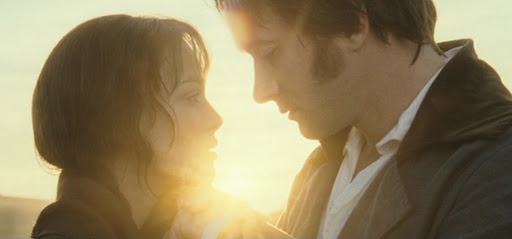Why Pride and Prejudice 2005 Is the Best Adaptation

Image courtesy of wordpress.com
By Mariah Solis
Jane Austen anonymously published Pride and Prejudice in 1813, not knowing the amount of acclaim it would receive for generations to come. 200 years later, a movie starring Keira Knightly (Elizabeth or Lizzie) and Matthew Macfayden (Mr. Darcy) captured the love and affection of fans, despite its many changes to the novel.
The film minimizes subplots and instead focuses on the romance and drama of the story. Minor characters are even entirely removed from the movie, such as Lady and Maria Lucas, Mr. and Mrs. Phillips, and Mr. and Mrs. Hunt. In addition, many serious scenes are cut short in order to condense the novel into a two-hour film. For example, Wickham’s flee from the military with Lydia in the book allows the reader to feel the despair and worry that Elizabeth’s family went through. However, the movie resolves the conflict quickly, making it difficult for viewers to fully experience those emotions alongside the family.
In contrast, the scenes between Darcy and Lizzie are extended and allow viewers to enjoy the developing romance. As a result, the ending of the film centers on them as a couple, sitting underneath the moonlight, “incandescently” happy to be together. This is a drastic change from the book’s ending, which concluded with Darcy and Elizabeth’s wedding and a summary of how everyone’s lives play out.
The film brings to life many beloved characters from the famous novel, though changes and differing interpretations are inevitable. For instance, Bingley is a much more awkward and gleeful character in the film, which adds a comedic and endearing energy to the romance between him and Jane Bennet. On the other hand, Mr. Bennet in the movie is a much more disinterested and toned-down character compared to the verbally abusive, neglectful husband and father readers encounter in the book. This personality change in the movie sets up the moment of surprise as, when Lizzie admits she loves Mr. Darcy, he shows genuine joy and excitement.
Even the main characters have different portrayals compared to the book. Mr. Darcy is a very proud, conceited, introverted, and arrogant man, but he owns up to it throughout the novel. In the book, when he shares with Elizabeth how he does not “converse easily,” this is an admission to frequently saying something blunt or wrong to a person. However in the movie, Mr. Darcy is still prideful but also very socially awkward, which changes the meaning of his words and makes him more appealing and charming to viewers.
Mr. Darcy being portrayed as more sympathetic also makes Lizzie’s decline of his proposal a bit harsher compared to the book, and Darcy appears oblivious to social clues rather than being arrogant. The movie even added a scene of Darcy helping Bingley practice proposing to Jane, a heartwarming moment for viewers to see Darcy’s commitment to correcting any grievances Lizzie listed in her declination.
While there are differences amongst the plot and character dynamics, the movie’s creative interpretation and style maintain the captivating love story, drama, and main themes of the novel. Each scene is breathtaking and gorgeous and is famous for using the natural world to help reflect the emotions of characters. Warm tones provided by natural light are used throughout the movie when a character is content, and a music score always matches the intricate emotions and feelings the characters are experiencing. When Darcy proposes for a second time, a beautiful piano melody plays over the natural sunlight radiating between Lizzie and Darcy as they both admit their love for each other.
The movie also highlights intimacy through eye contact and touch, allowing viewers to be completely immersed in the story and feel the growing tension between characters the way a book would. A famous example of this would be when Darcy holds Lizzie’s hand to help her in a carriage and flexes his hand as he walks away. Tiny moments like these draw in the audience and make a successful book-to-movie adaptation.
Pride and Prejudice molded the plot and characters in a contemporary twist, drawing the audience in with gorgeous cinematography and an entrancing drama and romance. Building on intimacy, tension, and a beautiful musical score, the movie brings the timeless story in a unique way to a new generation.





